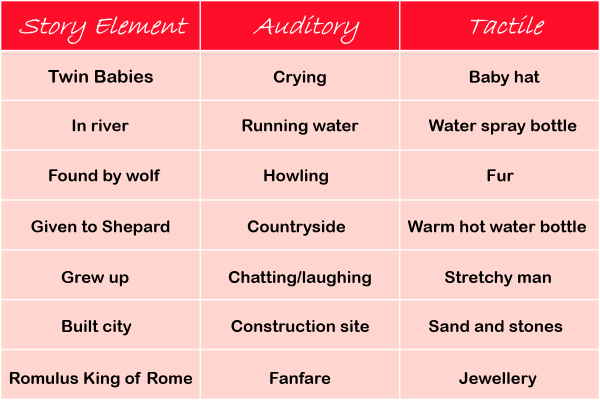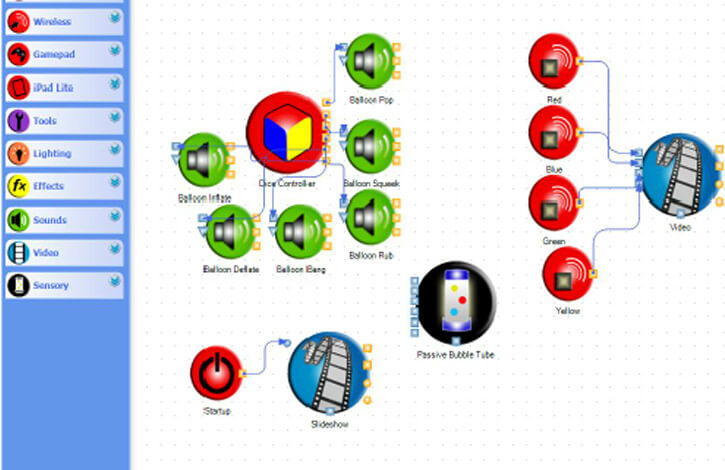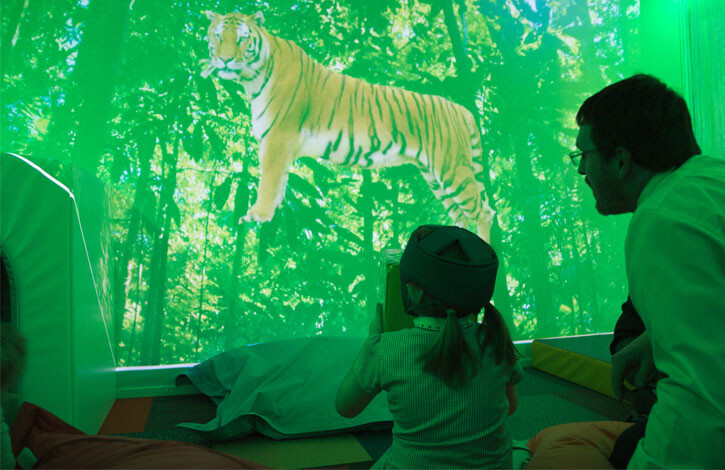Storytelling, sensory and learning is a great way to educate as well as stimulate the classroom.
A recent article by Inclusion Leader for a London School, Kate Bradley, in issue 11.5 of Teach Primary gives an insightful look into her methods of storytelling using all the five senses as well as vestibular and proprioception. Her re-telling of Romulus and Remus, which tells the story of how the great city of Rome came to be, is a great example of using all of the senses in fun and engaging ways that educate. See the table below that outlines her methods and how she includes storytelling into her lesson.

A key process to the story telling in which the author breaks down a story is looking at, “each page of the book, shortened it in half, then down to a sentence, then down to two or three keywords.” This method is key to extracting only the key parts of the story and makes it easier to apply to the senses and interactive options for tactile engaging experiences.
The Apollo Room Controller has been the go to piece of software and hardware to achieve interactive classroom storytelling for many years. Using the simple drag and drop interface you can attach all Apollo interactive sensory equipment, including smart interactive controllers together to create worlds and scenarios that bring any story to life.

The Apollo Room Controller drag and drop interface
Take for example Goldilocks and The Three Bears. Apollo Creative visited a local SEN school as part of National Storytelling Week, members of the team told the classic children’s tale using an interactive dice controller.
Using devices such as the dice controller in a sensory room, we could then sync everything together. For example, as the story opens with the three bears leaving their home for the woods, we can turn everything green including lights and bubble tubes then have the sound of rustling trees and tweeting birds in the background. You could even bring your own paper leaves to enhance the tactile nature of the story. As the story progresses, using an interactive dice controller is the perfect way for young learners to interact. Each roll of the dice can be synced with sound so that it plays a pre-determined recording such as, “This porridge is too hot!” or “This porridge is too cold!”. These are just some of the examples you could use to get learners interacting and understanding stories through cause and effect learning.

Storytelling is an integral part of learning and development, no matter what age or learning level. Using techniques that engage and stimulate the senses is a great way of educating the whole class which will bring fun and adventure into any story you choose. At Apollo Creative, we are always keen to see different ways of storytelling and how they have been applied into classrooms. Let us know if you have had great results using sensory equipment for creative storytelling, we’d love to hear from you!
